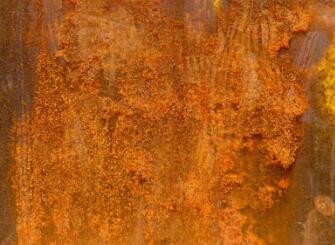
Source of pictures: Pixabay.com
Mackle was so excited that he was going to visit his grandma today. His grandma owned a big orchard. When he was a child, he loved to observe various small animals living in the soil, which are not often seen outside the orchard. This orchard, in other words, could be regarded as his small enlightenment class of science. Today, he was going to view the orchard as usual, and picked up some ripe fruits. When he just stepped one foot in, "Oh" he murmured. What happened?
It turned out that he opened the door with rust leaving on his hand. Before entering into the orchard, he had to go through an iron gate in the past. As he had not been here for a long time, he didn't notice the rust on the gate. His hands were stained with the rust on the iron gate. How does the "rust" form? Why does the iron gate "rust"?
The corrosion of iron (rusting) is caused by a redox reaction. What is the redox reaction? Generally speaking, there are outer electrons outside an atom, so does an iron atom. A reduction reaction is that the outer atoms get electrons, while an oxidation reaction is that the outer atoms lose electrons. Iron products rust because they undergo redox reactions due to their contact with air.
Redox reaction requires three ingredients: oxygen, anode and electrolyte. The anode is iron. The electrolyte is water or vapor in the air. The oxygen we just mentioned is the oxygen in the air. When these three ingredients are combined together, there will be the redox reaction, i.e. "rusting".
The electrolyte (hereinafter referred to as water or vapor) is equivalent to a tank that takes charge of shipping electrons. After the electrons are overflowed from the surface of iron, they "swim" with the help of the electrolyte into the oxygen. Then the oxygen atoms of oxygen get these electrons. This process is a redox reaction. In fact, the battery applies the same principle.
After rusting, there will be dark-red rust on the surface of the iron. That is the product of oxidation reaction. Its composition is a little complicated. We usually name it with the component having the most content: "ferric oxide". Its chemical formula is Fe2O3. Actually, it is a product combined with "water", so we usually use Fe2O3•nH2O to represent it.
Why does iron rust? Is there any benefit for iron? Is this a protection mechanism? After all, iron is a lifeless substance, so it is a bit exaggerated for saying that. However, many phenomena in nature exist for their own reasons. For iron or metal, they rust because they are seeking a "stable state." This involves knowledge of thermodynamics. The sparkling or dark and bright metals have higher internal energy than corroded and rusty metals. Higher internal energy means they are less stable. In order to transform to a more stable state, they will slowly rust. No matter how slow this process is, they are always developing toward this direction. When you learn knowledge about thermodynamics and energy, you can understand it more clearly.
Author: Zhu Yawen

















 京公网安备11010502039775号
京公网安备11010502039775号





